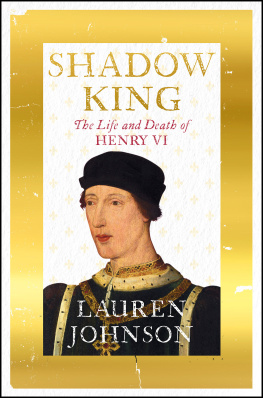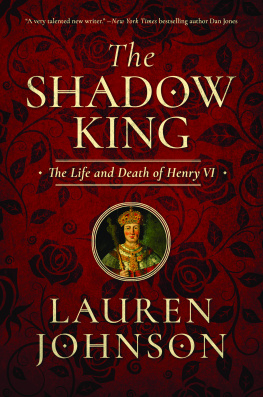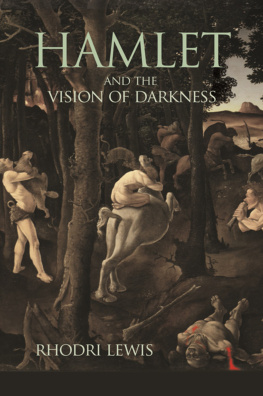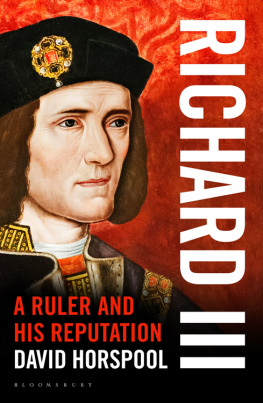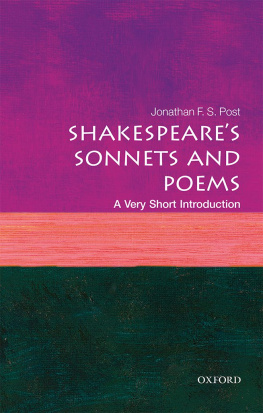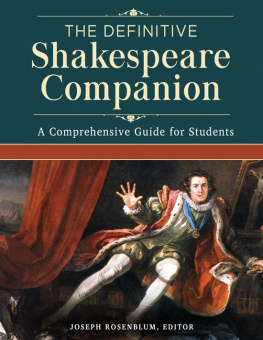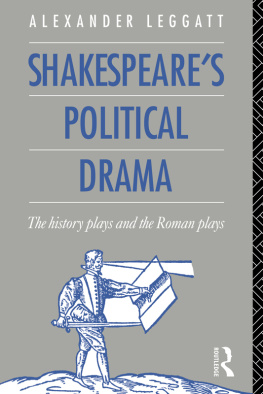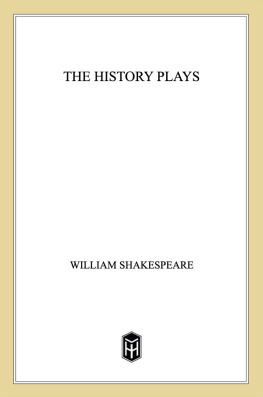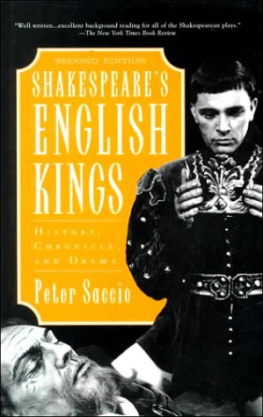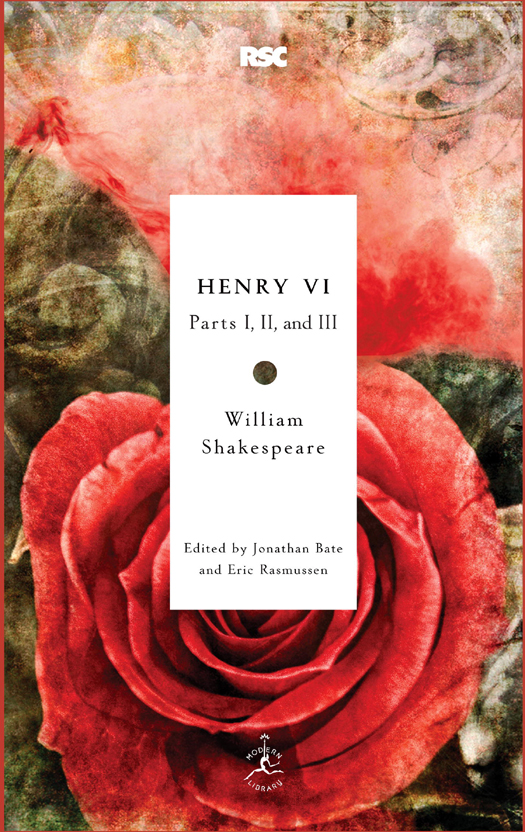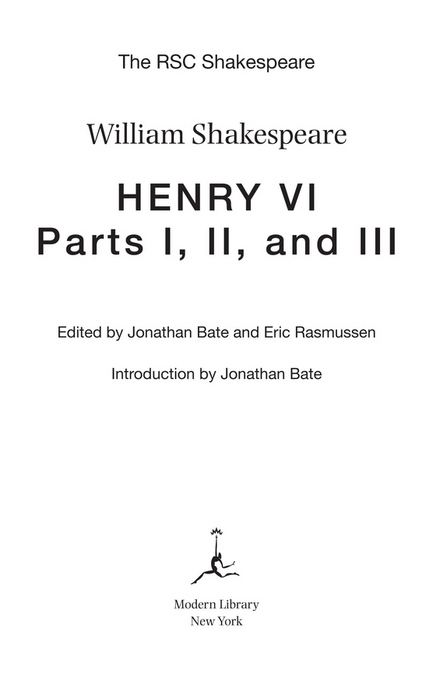2012 Modern Library Paperback Edition Copyright 2007, 2009 by The Royal Shakespeare Company All rights reserved. Published in the United States by Modern Library, an imprint of
The Random House Publishing Group, a division of
Random House, Inc., New York. M ODERN L IBRARY and the T ORCHBEARER Design are registered trademarks
of Random House, Inc. Royal Shakespeare Company, RSC, and the RSC logo are trademarks
or registered trademarks of The Royal Shakespeare Company. The version of
Henry VI and the corresponding footnotes that appear in this volume were originally published in
William Shakespeare:Complete Works, edited by Jonathan Bate and Eric Rasmussen, published in 2007 by Modern Library, an imprint of The Random House Publishing Group, a division of Random House, Inc. eISBN: 978-1-58836-887-4 www.modernlibrary.com v3.1
The RSC Shakespeare Edited by Jonathan Bate and Eric Rasmussen
Chief Associate Editors: Jan Sewell and Will Sharpe
Associate Editors: Trey Jansen, Eleanor Lowe, Lucy Munro,
Dee Anna Phares, Hlose Snchal
Henry VI Parts I, II, and III Cover design: Gabrielle Bordwin
Cover photograph: Datha Thompson/Arcangel Images
Textual editing: Eleanor Lowe and Eric Rasmussen
Introduction and Shakespeares Career in the Theater: Jonathan Bate
Commentary: Charlotte Scott and Hlose Snchal
Plot Synopses: Will Sharpe
In Performance: Karin Brown (RSC stagings), Peter Kirwan (overview)
The Directors Cut (interviews by Will Sharpe and Kevin Wright):
Edward Hall and Michael Boyd
Designing
Henry VI: Tom Piper
Editorial Advisory Board Gregory Doran, Chief Associate Director, Royal Shakespeare Company
Jim Davis, Professor of Theatre Studies, University of Warwick, UK
Charles Edelman, Senior Lecturer, Edith Cowan University,
Western Australia
Lukas Erne, Professor of Modern English Literature,
Universit de Genve, Switzerland
Akiko Kusunoki, Tokyo Womans Christian University, Japan
Jacqui OHanlon, Director of Education, Royal Shakespeare Company
Ron Rosenbaum, author and journalist, New York, USA
James Shapiro, Professor of English and Comparative Literature,
Columbia University, USA
Tiffany Stern, Professor of English, University of Oxford, UK
CONTENTS
INTRODUCTION
TO THE THREE PARTS OF
HENRY VI
AFTER AGINCOURT
Shakespeares epic drama of
Henry V ends with the Chorus speaking an epilogue in sonnet form.
It offers a forward look that somewhat deflates the triumph of Agincourt. King Henry, the star of England, will live but a small time. The worlds best garden, having been brought to order by his charismatic arts, will soon be choked with weeds. His son will be crowned King of France and England while still an infant. So many rivals then had the managing of his state That they lost France and made his England bleed, / Which oft our stage hath shown. Shakespeare thus reminds his audience that his cycle of history plays is complete: the sequence from Richard II to Henry V at this point joins on to the earlier written tetralogy of the three parts of Henry VI and Richard III.
Sometimes gathered together in modern productions under a title such as The Wars of the Roses or The Plantagenets, these plays tell the story of Englands self-scarring and dire division. In Henry VI Part I, Henry Vs miraculous conquest of France goes into reverse, despite the exploits of the noble Talbot; meanwhile civil war brews at home. In Part II, the war with France is brought to an end by the marriage of King Henry VI to Margaret of Anjou, but the weak king cannot prevent the rise of the Yorkist faction. At the beginning of Part III, the succession is surrendered to Richard Duke of York, but his ascendancy is halted on a Yorkshire battlefield, where Queen Margaret brings his life to an undignified end; his sons spend the rest of the play avenging himand it is one of those sons, Richard of Gloucester, the future Richard III, who proves most unscrupulous and therefore most to be feared.
SEQUENCE AND AUTHORSHIP
The Romantic poet and Shakespearean commentator Samuel Taylor Coleridge did not think well of this bloody triple-header. He said of the opening lines of
Part I, if you do not feel the impossibility of this speech having been written by Shakespeare, all I dare suggest is, that you may have earsfor so has another animalbut an ear you cannot have.
To his own finely tuned ear for poetry, the rhythm of the verse was crude and far inferior to that of even Shakespeares earliest plays. Coleridge was lecturing on Shakespeare only a few years after the publication of Edmond Malones scholarly Dissertation on the Three Parts of King Henry VI, tending to show that these plays were not written originally by Shakespeare. Ever since Shakespeare rose in the course of the eighteenth century to his status as supreme cultural icon, there has been a tendency to assume that any less than perfect workTitus Andronicus, say, or Periclesmust have been the product of some lesser dramatist, or at the very least that Shakespeare was merely patching up a rickety old play for which he was not originally responsible. In the case of the Henry VI plays, support for the latter possibility seemed to come from the existence of early editions of versions of the second and third parts under the titles The First Part of the Contention of the two Famous Houses of York and Lancaster with the Death of the Good Duke Humphrey (published in 1594) and The True Tragedy of Richard Duke of York and the Death of Good King Henry the Sixth, with the Whole Contention between the two houses Lancaster and York (1595). Malone and his successors argued that these were the originals, written by another dramatist (probably one of the so-called university wits, Robert Greene or George Peele), and that Shakespeare merely undertook the work of a reviser. As for Henry VI Part I, Malone regarded it as almost wholly un-Shakespearean.
Though grounded in textual scholarship, his arguments were driven by critical distaste for the plays style of verse, the stately march whereby the sense concludes or pauses uniformly at the end of every line. More recently, scholars have suggested that The First Part of the Contention and Richard Duke of York are in fact texts of works by Shakespeare, albeit poorly transcribed ones. The titles The First Part and The Whole Contention strongly suggest that the plays that we now call Part II and Part III of Henry VI originally constituted a two-part work. They were probably first produced in the early 1590s, when Christopher Marlowes mighty Tamburlaine the Great had established a vogue for two-part plays filled with battles, processions, and high-sounding verse. What we now call Henry VI Part I would then stand slightly apart. Since it appears to have been premieredto considerable acclaimin 1592, it was probably written after the two Wars of the Roses plays that are now called the second and third parts.
Perhaps it was what in modern film parlance is called a prequel, designed to cash in on the success of a blockbuster. Its lack of unity, and its use of different source materials for different scenes, suggest that it may have been a collaborative work. Thomas Nashe, who also wrote in partnership with Marlowe, has been suggested as a prime contributor, but there may have been three or even four hands in the composition. The possibility that Shakespeare was not the principal author of the Talbot/Joan of Arc play would account for some of the inconsistencies in the sequence considered as a trilogy. Among these are the fact that in


